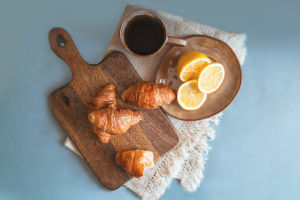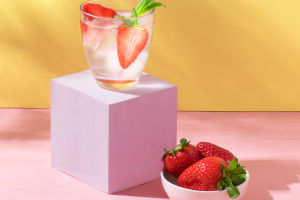In the leisure of spare time, bring a book to the café and casually order a cup of hot latte.
What’s most delightful is the moment when the steaming coffee is served, the rich aroma blending with the velvety foam, and beyond that, the stunning latte art.
When it comes to coffee, it's hard not to think of latte art. We often see intricate and beautiful designs, but behind the beauty lies a lot of practice and complex principles.
The Principle of Latte Art
The base of most latte art coffees is Espresso (a concentrated coffee).
This is because Espresso has a thick layer of oil (Crema) on top that generates enough surface tension to support the micro-bubbles of foam. By arranging the foam and oil, various patterns can be created. So, besides the barista's technique, the foam and coffee oils are also crucial factors in the success of latte art.
The key prerequisite for successful latte art is sufficient surface tension in the base. So, not only coffee but also regular water can be used to create latte art. However, the difference lies in taste and the ability to create beautiful patterns.
Steps to Create Latte Art
1. Extract Coffee: Start by preparing the Espresso base, then begin frothing the milk because the foam structure will dissipate if left for too long.
2. Pour an Appropriate Amount of Milk into the Latte Art Pitcher: This seemingly simple step is the first step to successfully frothing the milk. As milk turns into foam, its volume expands, so the milk should not be too much to allow enough space for heating and frothing.
3. Release Steam: Before inserting the steam wand into the milk pitcher, open the steam to release any water from the steam wand's tip. Otherwise, excessive water in the milk will affect the fineness of the foam.
4. Froth: The main purpose of this step is to introduce air into the milk to create foam. Place the steam wand just below the surface of the milk and turn the steam on to its maximum setting. Adjust the amount of foam according to the type of coffee until there is enough foam, then stop frothing.
5. Mix: When there is enough foam, insert the steam wand into the bottom of the milk pitcher to start swirling the milk, mixing the foam on top with the milk underneath. Once the temperature reaches 60~70 degrees Celsius, turn off the steam, and the frothed milk for latte art is ready.
The ideal drinking temperature for milk is 60~70 degrees Celsius; temperatures lower than this will result in a coffee that's not hot enough, affecting the taste, while temperatures higher than this will destroy the milk's structure, resulting in a loss of sweetness.
6. Pouring Latte Art: While the foam is still integrated with the milk, pour it into the Espresso, ensuring thorough mixing of coffee and milk. When the cup is filled to about 6/7, use the movement of the cup and pitcher to directly draw patterns.
Latte art is almost a prerequisite skill for baristas, and making a latte with intricate art might not take more than three minutes. However, what’s not visible is the effort and sweat that baristas put into practicing. If you have the chance, why not try it yourself and experience the joy of creating latte art?


